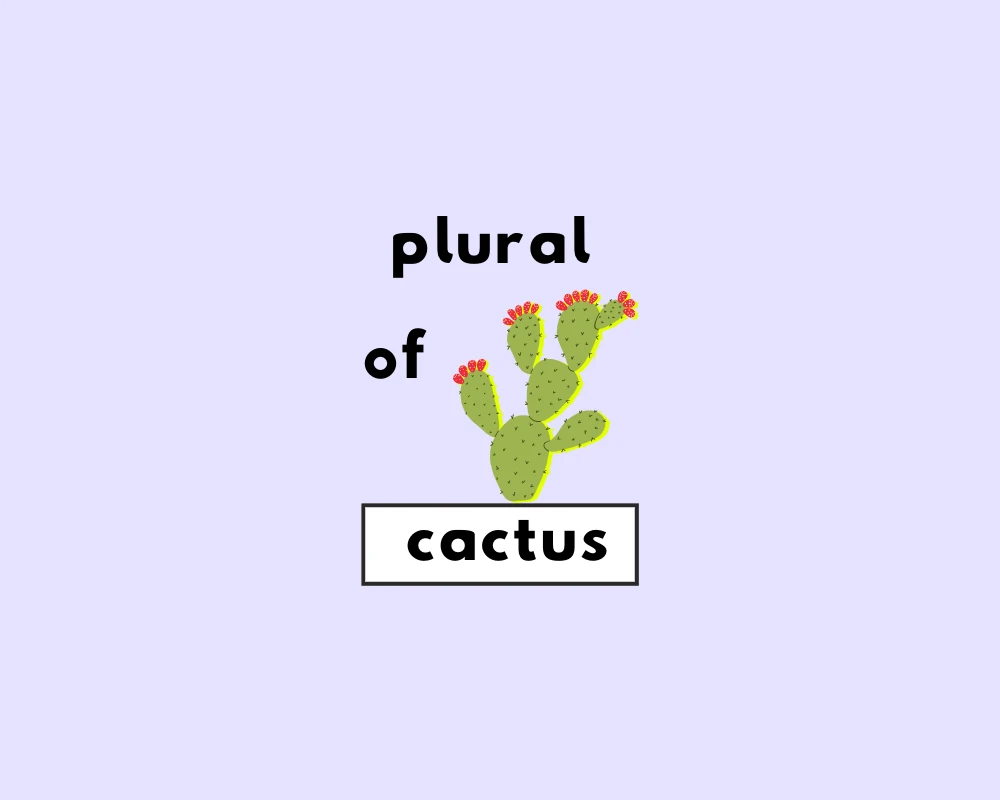
Contents
Toggle
“Cacti” or “cactuses”: what’s the plural of cactus?
Imagine that you’re taking a stroll through the desert and you spot a cactus, then you see another one. How would you say that you saw more than one cactus? Would you say you saw cacti, cactuses or cacopodes?
What’s the best way to refer to more than one of these prickly and sturdy succulents: cactuses or cacti?

The answer is that cactus has two excepted plurals: cacti and cactuses are both correct spellings to refer to more than one cactus.
The history of the cactus
Cactus originally came from the Geek word kaktos, which was the name for a type of prickly plant in Sicily. Carl Linnaeus gave the name to these spiked and leafless American plants that we now refer to as cactuses, believing that possibly the cactus was the long distant relative to the classical Sicilian plant. This occurred in 1769, once the word had already entered and evolved from Latin.
That’s the history of the word cactus, and despite being originally Greek, cactus still uses Latin suffixes to denote both singular and plural noun forms. There are still many commonly used Latin noun forms in English that follow the same pattern as cactus.
Think of other words in English like fungus, alumnus and syllabus: they all switch to “I” as a plural, the plural of fungus is fungi, alumnus is alumni and syllabus becomes syllabi. Cacti, likewise, is still accepted and recognized as a plural to mean more than one of these desert succulents.
Cactuses / cacti
Cactuses uses the standard Americanized plural noun form, and adds an -es to show a plural. This spelling is also accepted and widely used in conversation and writing.
What’s the takeaway on the correct plural of cactus? Well, the answer is that there are two correct ways to refer to more than one cactus: cacti and cactuses. One is not technically more correct or better than the other, but if you want to stick to the original Latin form, you can use cacti. The choice is ultimately yours to make, we’re just here as a friendly guide.
Words that end in -us
Cactus is an irregular plural noun that does not end in the typical -s/-es that regular plural noun forms take. This is probably why the plural of cactus is often confused, since it’s original plural form, cacti, is irregular in English, and fairly uncommon. Still, cactus is not alone: fungus, alumnus, octopus, hippopotamus, all end in -us in their singular noun form. Likewise, each behaves the same in their plural forms, and substitute the -us for -i: fungi, alumni, cacti, octopi (octopuses), and hippopotami (or hippopotamuses).
| singular | plural |
| cactus | cacti (or cactuses) |
| octopus | octopi (or octopuses) |
| radius | radi (or radiuses) |
| fungus | fungi (or funguses) |
| alumnus | alumni (or almunuses) |
| syllabus | syllabi (or syllabuses) |
Aside from being irregular plural noun forms, these words all share a common history, and have Latin origin. Latinate suffixes, or words that derive from Latin; rather than, say, Old English or Germanic languages (which is what mostly makes up the English language) and still imitate their Latin form.
Words like fungus, alumnus, cactus, and other similar structured words have kept their original Latin form in both their singular and plural noun forms. That’s pretty incredible, and means that these words have been in use since roughly the early 16th century.
What are cacti?
Cacti are:
any of a family (Cactaceae, the cactus family) of plants that have succulent stems and branches with scales or spines instead of leaves and are found especially in dry areas (such as deserts). (Merriam-Webster).
Examples of cacti/cactuses used in context
| Examples: “cacti” / “cactuses” used in sentences |
|---|
| The leafless, spiny stem is the characteristic feature of the majority of cacti. Almost all cacti are succulents, meaning they have thickened, fleshy parts adapted to store water. Cacti show a wide variety of growth habits, which are difficult to divide into clear, simple categories. The 1,500 to 1,800 species of cacti mostly fall into one of two groups of “core cacti“: opuntias (subfamily Opuntioideae) and “cactoids” (subfamily Cactoideae). |
Origin of the word cactus
c. 1600 from Latin cactus, from Greek kaktos, name of a type of prickly plant of Sicily (the Spanish artichoke), a “foreign word of unknown origin.”
Sources
- Cactus, Canadian Encyclopedia.
- Cactus, Online Etymology Dictionary.
- Cactus/cacti, Wikipedia.
- Definition of cactus, Merriam-Webster.










